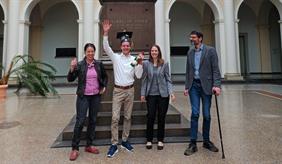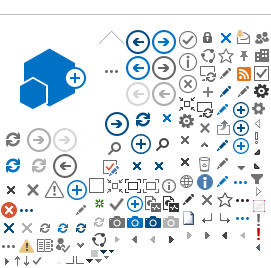16.06.2025

René Méité successfully completed his doctorate at Humboldt University (HU) Berlin on June 12, 2025 with the topic “Environmental performance and trade-offs of manure-based adaptation options in livestock farming”.
His dissertation was prepared as part of the BMBF junior research group BioKum at the Leibniz Centre for Agricultural Landscape Research (supervisor Dr. Sandra Uthes) in cooperation with the HU Berlin (Prof. Dr. Sonoko Bellingrath-Kimura) and the Nürtingen-Geislingen University of Applied Science (Prof. Dr. Maria Müller-Lindenlauf).
René Méité was employed from 2019 to 2025 in the ZALF working group “Farm Economics and Ecosystem Services” (LBW) and worked in the BMBF-funded junior research group BioKum on the modeling and evaluation of farm-level emission reduction measures life cycle assessments and multi-criteria evaluation methods. The focus of his work was particularly on measures along the manure management chain in livestock farming, including feeding algae and using a cow toilet in dairy cattle feeding or insects produced on different substrates in pig feeding.
The results of his work contribute to improving our understanding of the individual and cumulative effects of emission reduction measures as well as trade-offs between resulting environmental and socioeconomic impacts.
We would like to congratulate René Méité on his successfully defended dissertation and wish him all the best for the future!
His dissertation at the Humboldt University of Berlin was written cumulatively and contains four published scientific papers.
Méité, R., Artner-Nehls, A. and Uthes, S. 2023. Trade-offs associated with on-farm ammonia emission abatement practices in specialized pig farms. Austrian Journal of Agricultural Economics and Rural Studies 33, 45-52.
Farm adaptation to stricter nutrient management legislation and the implications for future livestock production: a review
Modeling the environmental impacts of Asparagopsis as feed, a cow toilet and slurry acidification in two synthetic dairy farms
Insects to pigs and back: an attributional life cycle assessment
